A few weeks ago, I was at a family BBQ/birthday party for my two-year-old nephew. With my brother-in-law working later than he had hoped, I picked up BBQ duty. A 5+1 burner gas grill is no big deal for a seasoned veteran like me: Gas open, burners turned, switch pressed. Lit.
Instead of a normal preheat, I got a grease fire.
Turns out, this grill hadn’t been cleaned in a while. Possibly ever. I had to make a lot of decisions in a very short amount of time to fend off a disaster, and thankfully the only damage was to the grill itself — and a bit of siding that now resembles lasagna noodles.
All of this could have been prevented with regular cleaning and, at the absolute worst, a fire extinguisher. If you own a BBQ, you need to own a fire extinguisher. Have two BBQs? Good news, they come in two-packs! The safety of yourself and your loved ones is worth more than the $US50 ($64) you’ll spend.
How to clean a gas BBQ
Whether you’re a new-ish grill owner in need of a tutorial, or an old pro who’s been putting it off, today is a great day to get to cleaning. Let’s take a tour on my gas BBQ, which hasn’t been cleaned since the end of April. (I like to clean mine once my tank reaches a low level, about once a month in the summer.)
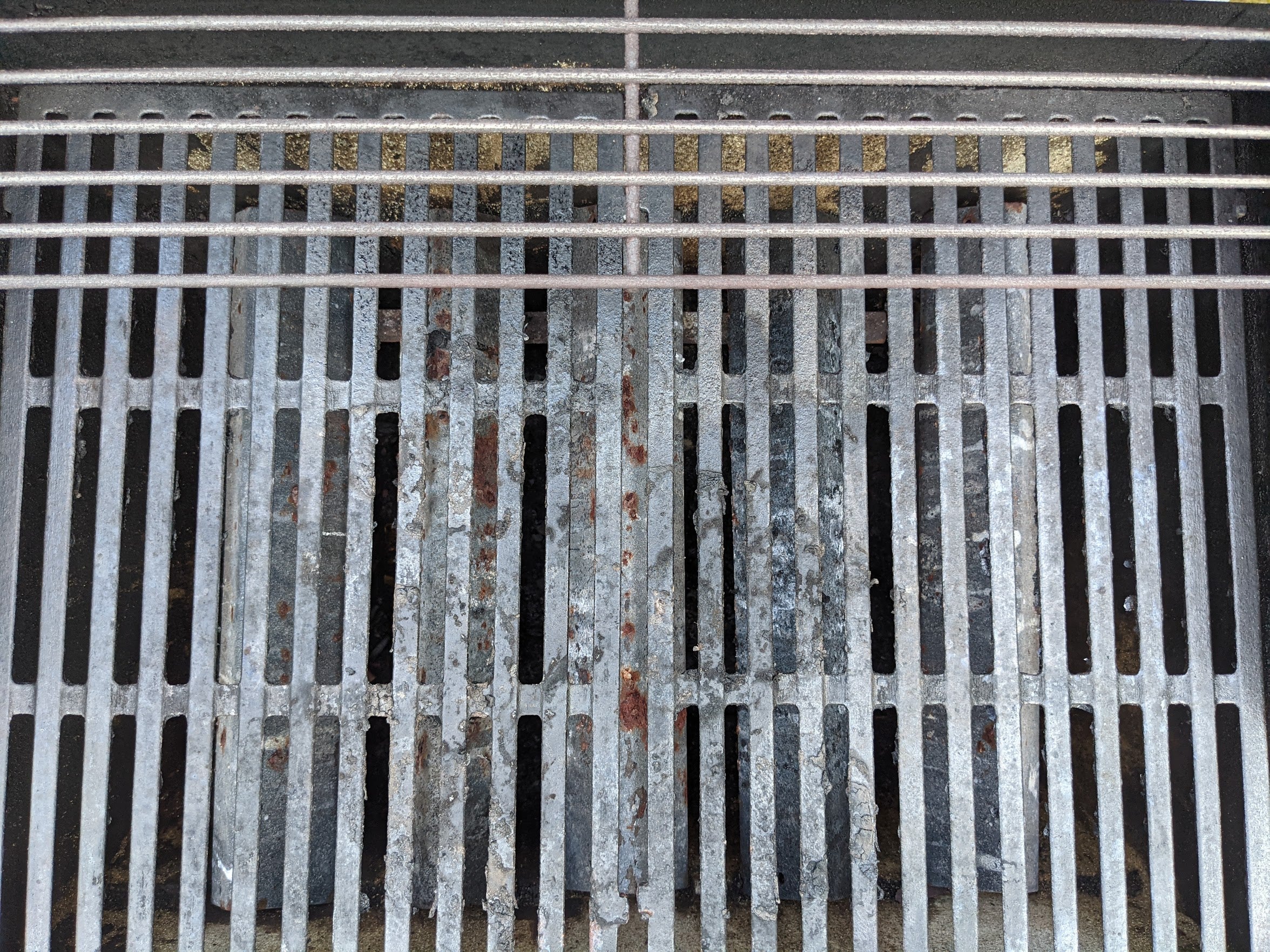
Burn off the excess
Start with a burn-off to loosen things up. Those crusty bits on the grates might be the only thing your food touches, but there’s plenty more of them down below, and they’ll come off better once things have been warmed up.
CAUTION: If your BBQ is horribly, awfully, grease-spattered and the drip pan is overflowing, do not turn it on. Skip ahead to the drip pan and tub cleaning steps down below, and come back here afterward.
Set all of your burners to high, close the lid, and leave it alone for an hour. During this time, assemble your mise en place: gloves, putty knives, trash bags, and newspaper or a flattened cardboard box. Scrape your grates off as best you can with the brush of your choosing and kill the heat. Part one is done.
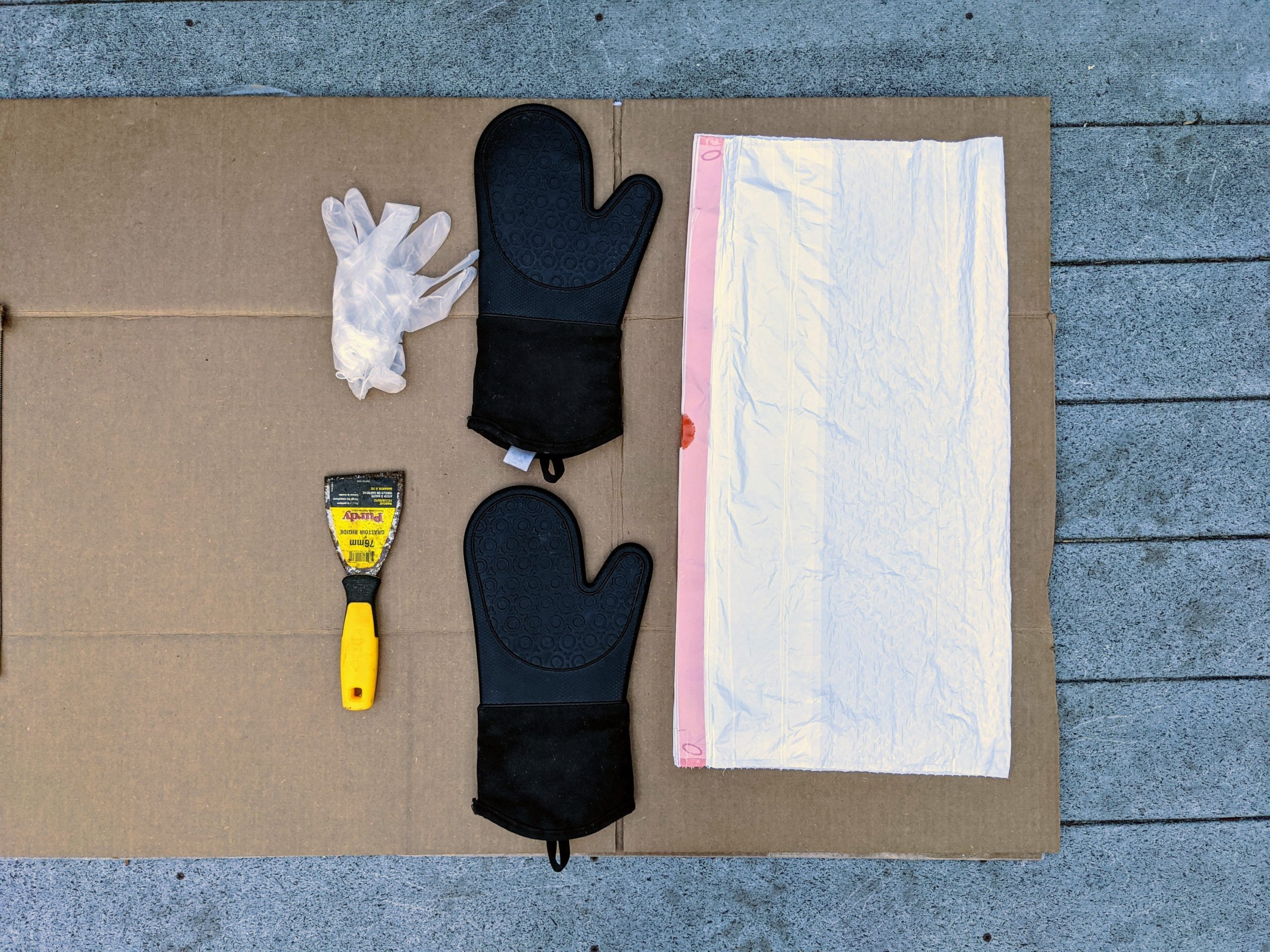
Once the grates are cool enough to handle with heat-safe mitts or gloves, remove them as well as any interior pieces (like these triangular bars) and set them on your handy flattened piece of cardboard.
Clean the drip pan and tub
Pull out your drip pan and, using the putty knife, scrape everything you can directly into the trash. If the pan is covered in fat, make sure to get that cleaned off too! I don’t like using chemicals beyond dish soap here, but if you use a solvent or grease remover, be sure to thoroughly wash and dry the pan before replacing it in your grill.
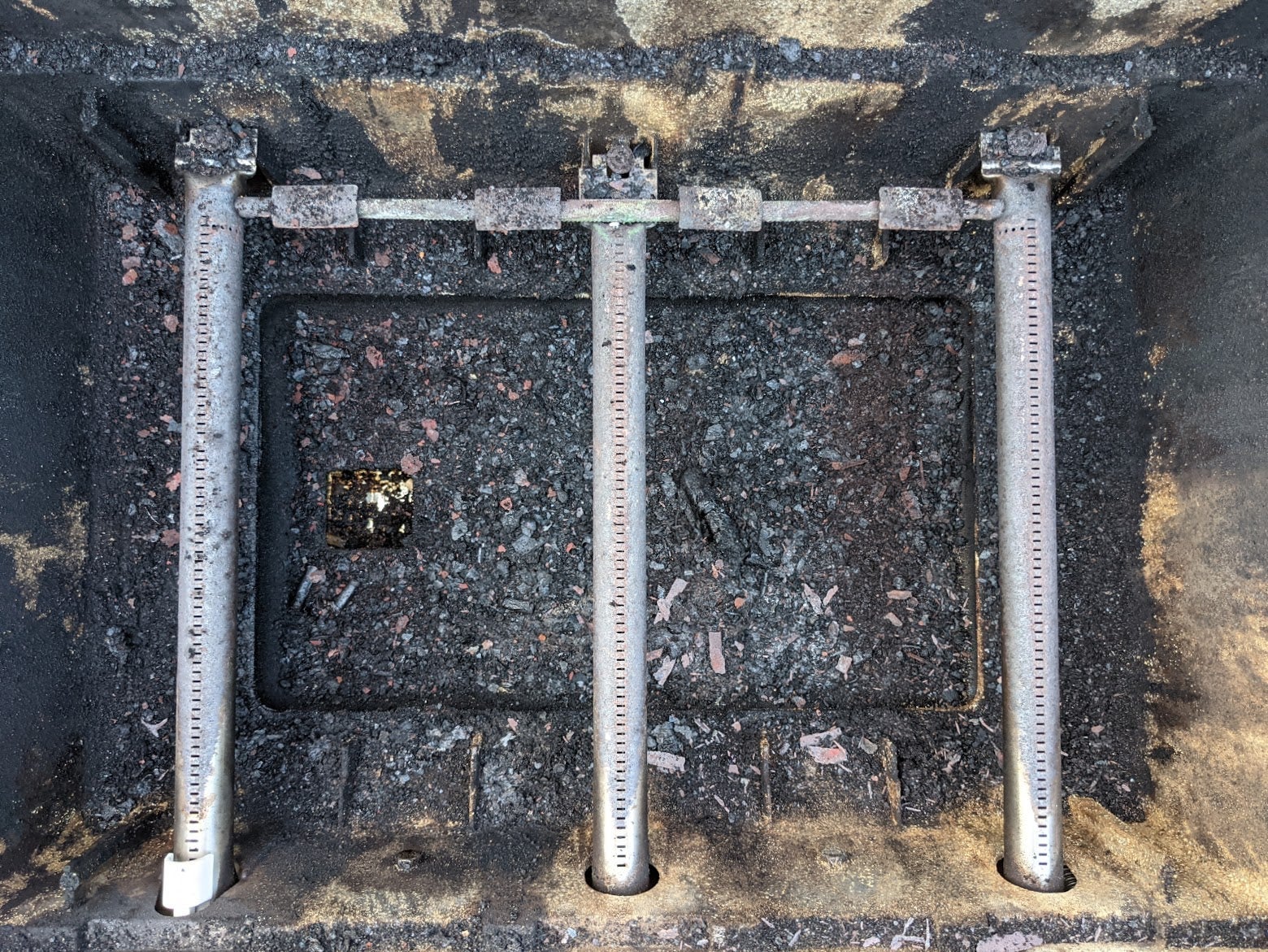
Next up: the tub (where the burners are). Now that you’ve cleaned your drip pan to a glorious shine, we’re going to get it dirty again. The drain hole from the tub to the drip pan can get clogged, so it’s best to clean what’s in the pan first before trying to stuff more gunk through such a small opening.
Grab your trusty knife and coax all that loosened crud into the drip pan, dump it out, and replace the pan, the grates and interior components if necessary, and that’s it. It is a very short, and incredibly satisfying process that will lead to better heat distribution through your cooking surface.
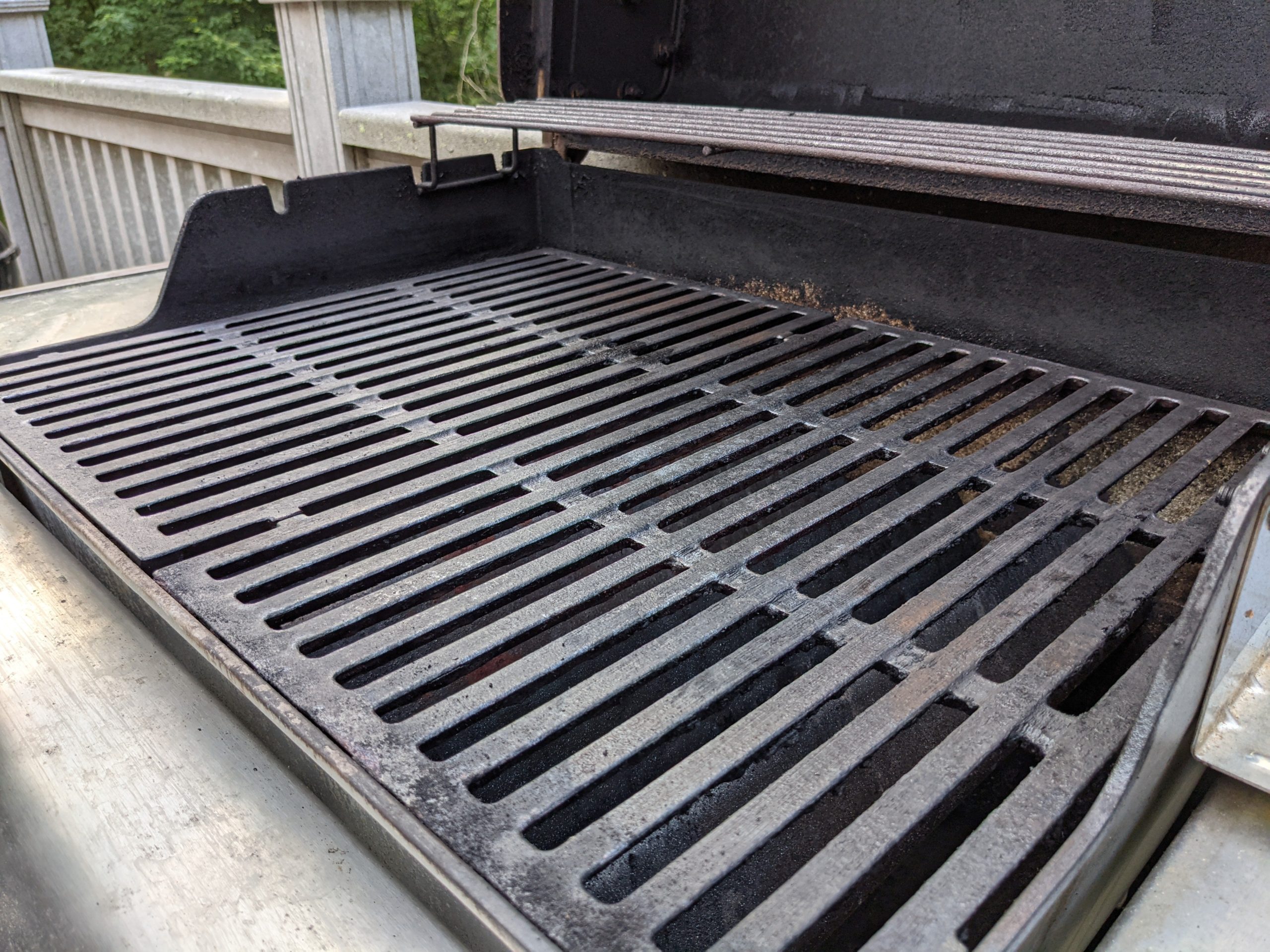
Oh, and if you’re thinking about buying a grill or you’re throwing a BBQ to celebrate being able to see your friends again: Please pick up a fire extinguisher first (and hope that your family never has to thank you for saving them from being engulfed in flames).
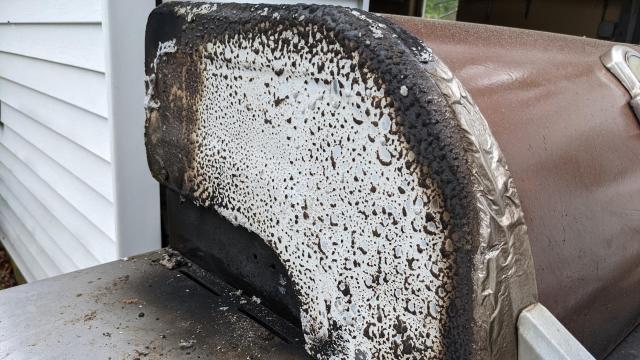
Leave a Reply
You must be logged in to post a comment.